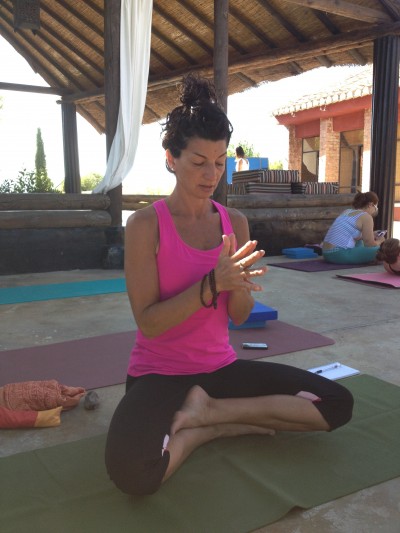I was recently at a dinner party and got to talking with a woman who sharing with me her experience with neck pain. As I asked her questions about the nature of the pain, when it started and what makes it worse, a picture began to emerge of a woman who spends most of her time in the car, has 2 children that are very active and a stressful job. It’s no wonder she has neck pain! She had started going to a chiropractor in an attempt to find relief. She  found that the gym provided her with the only fitness time she could squeeze into her schedule but nothing was really decreasing the pain.
The one thing she did mention that gave her relief was her new routine of hiking in the woods near her home with her dog. Far from the noise of the city and her busy life, she has a chance to connect with nature and move her body in a more natural way. She said she felt like the payoff was so much greater than when she went to the gym because it was much more peaceful. In the  absence of the TV or overhead music or the chatter of her treadmill mates, she was more able to relax into her body.
In my work with yoga practitioners, both in class and in private sessions, I often meet people who are dealing with aches, pains or just general tightness in the body. They often begin the conversation with a description of the pain itself and after some questioning on my part, a story of the pain itself begins to emerge. Unless the pain is pretty acute and localized, it usually isn’t related to one particular action or injury. It can be, in some instances, but in many instances, it’s related to general lifestyle issues that fall into many different areas of their life: their exercise routine, their job, their relationships, their nutrition, their sleep patterns, their history with stress. So, in order to create an effective plan of attack on aches and pains in the body, one needs to map out all these pieces of one’s life and look for the connections between each one. This is what I call ” connecting the dots.”
If you can imagine each one of these pieces being its own “dot,” then you can see how, in the example of the woman above, her neck pain was the symptom she felt and all the other pieces ( her job, her stress level, her relationship with her kids and husband, her long bouts of sitting in the car) were forming a picture that illustrated her current life siutation. Each issue was a dot and if you drew lines from one to the other, you’d connect these dots in a matrix that illustrated her life story. The challenge for many of us is 1- to do this mapping exercise and 2- to start to identify what can be changed so as to break the cycle and start to create new patterns of movement, new habits around nutrition and exercise and new ways of managing our stress.
We all can start from the first dot: how we feel. For many of us, it’s a localized feeling in one part of our body. To identify it, sit in stillness, close your eyes and see if anything rises to the surface. It might be a more general feeling of fatigue or anxiety; that’s one experience. Or, it can be a more localized sensation. Whatever it is, stay with it. Notice the quality around the feeling. Then, taking a piece of paper, start with that as your first dot. Work in a circle from there, identifying the quality, what brings it on, what actions you’re taking when the feeling arises. You’re beginning to see a picture emerge of your life as you know it now; from here, you can start to move to the next phase which has to do with creating new patterns to achieve greater health.
My next post will address that piece, but for now, stay with this part. Use this as your own diagnostic tool to identify your pressure points, your hot buttons and soft spots. This is the first step in connecting the dots so you can create new habits and achieve greater health.

